#Indian Fabrics
Photo

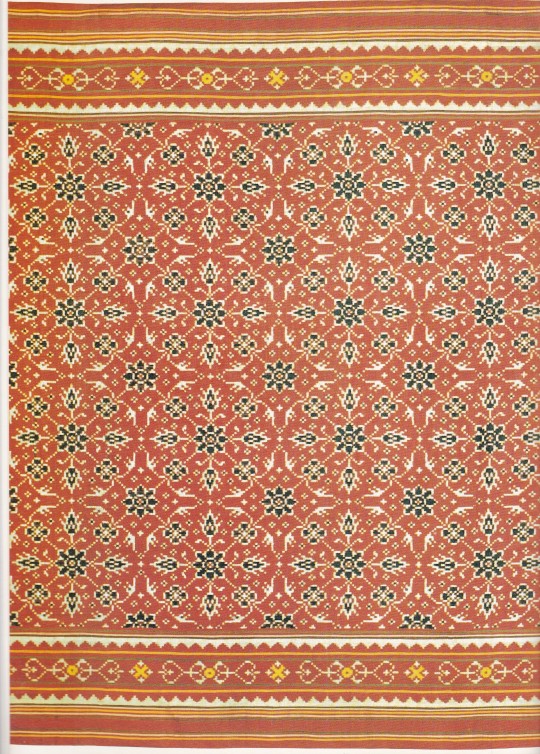

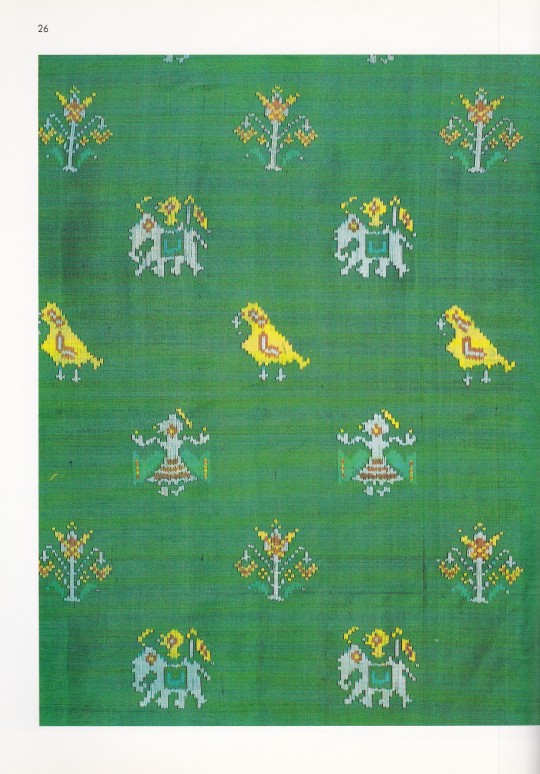

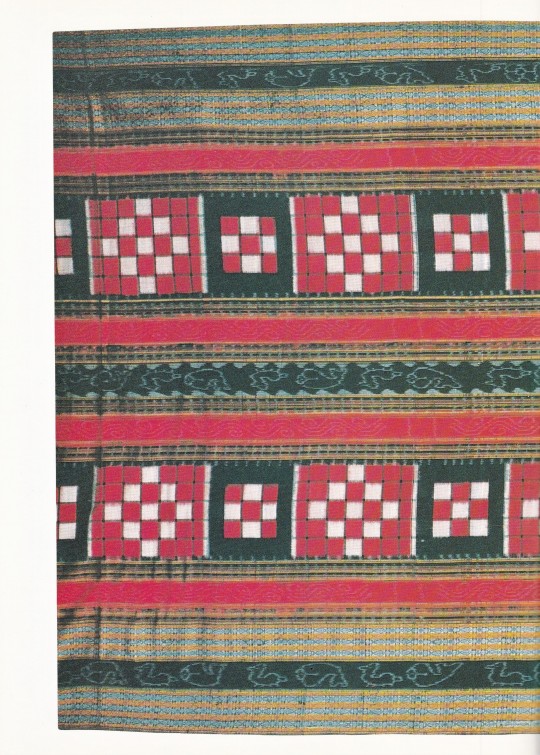
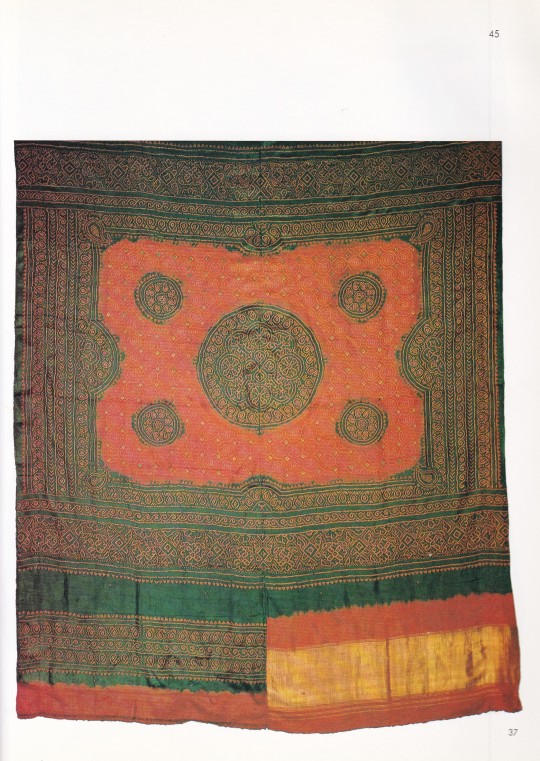
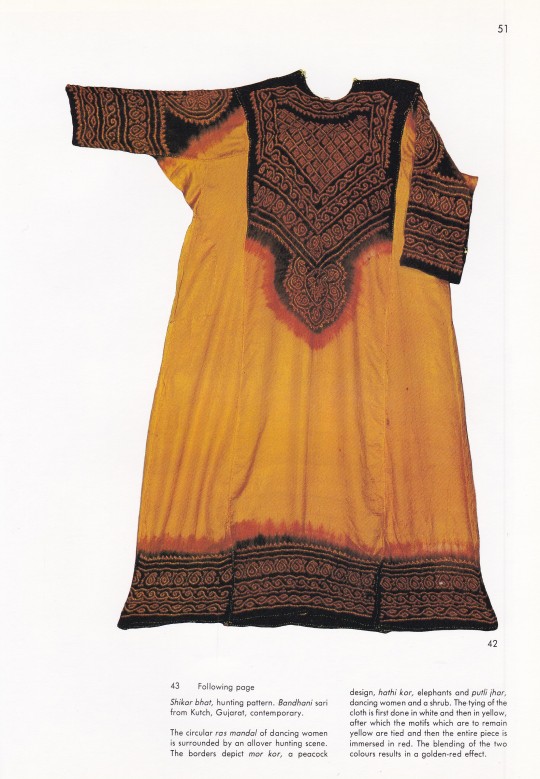
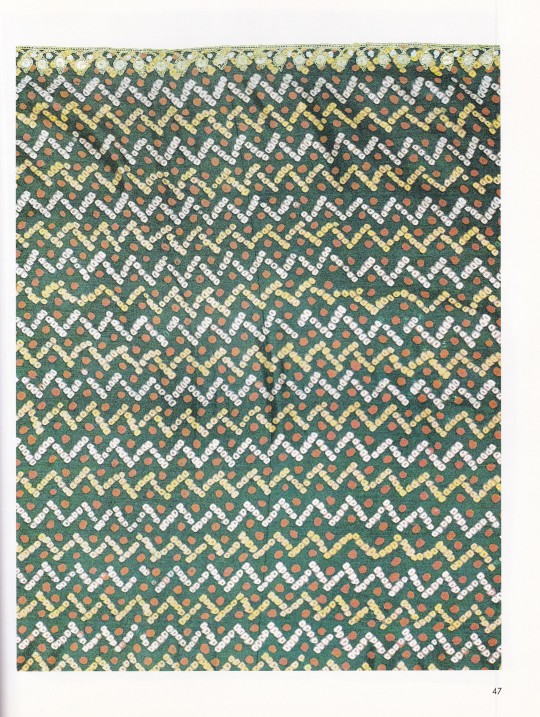
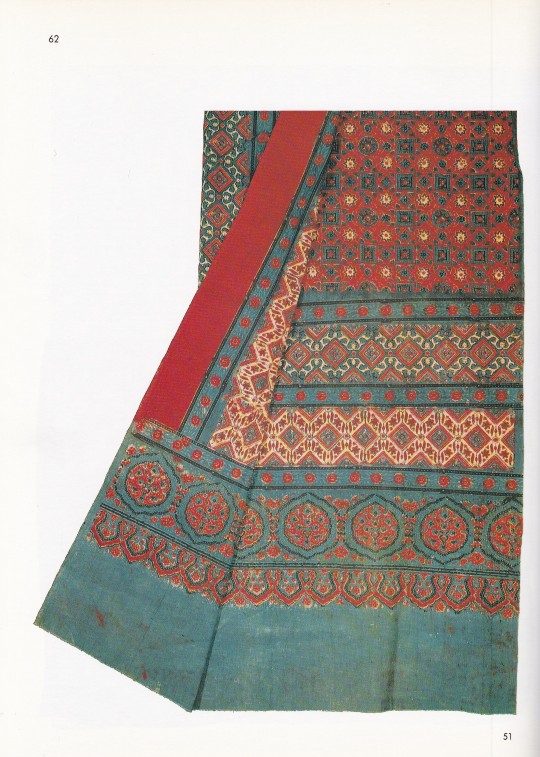
Patolas
and Resist-Dyed Fabrics of India
Mapin Publ., Ahmedabad 1988 , 64 pages, 30 x 22 cm , Hardcover, ISBN 9780944142097
euro 60,00
email if you want to buy :[email protected]
A traditional method of weaving fabric, patola weaving follows the double ikat resist-dyeing method, in which both the warp and weft are both resist-tied and dyed before the weaving begins. Patola are known for their rich colours and patterns and sharply defined motifs, which are achieved through the meticulous preparation of warp and weft threads, followed by resist-dyeing and, finally, weaving.
Catalogue Published in conjunction with the "Voyage of A Cloth' exhibition (Jakarta 1988), this book celebrates the double-ikat silk fabric in which both warp and weft are separately tie-dyed before weaving. It is the acme of the weaver's skill.
08/03/23
orders to: [email protected]
ordini a: [email protected]
twitter: @fashionbooksmi
instagram: fashionbooksmilano, designbooksmilano
#Patolas#indian fabrics#resist-dyed fabrica#double-ikat silk fabric#warp and weft threads#textiles books#fashion books#fashionbooksmilano
4 notes
·
View notes
Text

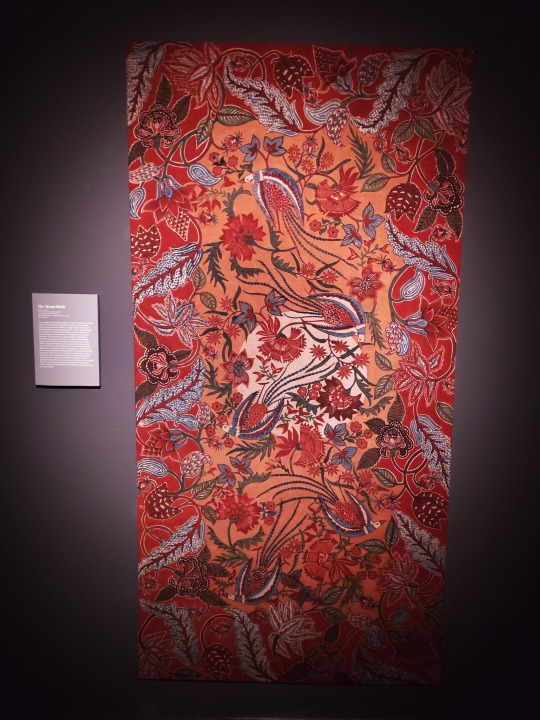
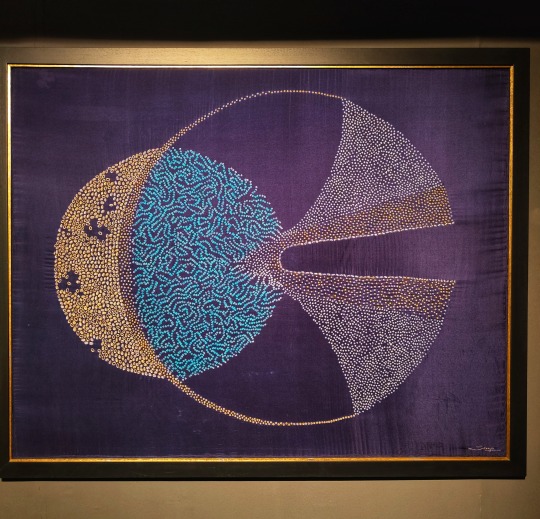

Some pictures from the Sutr Santati exhibition in New Delhi, a textile exhibition that brings together various diverse weaving methods and fabrics if the country.
Top to bottom:
Hanging by a Thread by Lakshmi Madhavan: Fine cotton with zari fabric by Aravind Vijayan and family; Kerala - The words "anybody", "nobody", "somebody", "everybody" is woven into the fabric and morphs binaries between caste, class, gender.
The Moon Birds by Bappaditya Biswas: Cotton; West Bengal - Artist's involvement in reviving Jamdani weaving
Antarman by Sukanya Garg: Habotai silk , Gujarat - Using visuals of cellular biology to create iterations of the crescent moon (symbol of the flow of time), the textile symbolises the journey towards the timeless self, finding out own inner voice and self realization.
Tota Maina ki Kahani, Himroo ki Zubani by Ahmed Saeed Qureshi, Imran Ahmed Qureshi, Shaikh Yaseen: Cotton, Silk; Maharashtra - Based on the folklore of the love of the parrot and the mynah, the artist asks where will the birds perch now to chirp away and express their love? He feels it is no longer possible with the number of trees being cut down.
Curated by Lavina Baldota
#Sutr Santati#textiles#exhibition#textile exhibition#India#Indian fabrics#Fabrics#Art#Weaving#Indian fashion#Couture#My photography
5 notes
·
View notes
Text
#marketing#bohostyle#branding#sales#business#business growth#handmade vintage kantha quilt#vintage#vintage saree#vintage silk saree#best silk dress#best silk fabric#silk vintage saree#gift ideas#indian sarees#indian fabrics#silk saree
0 notes
Text
‘India In Fashion’ NMACC Gala Event Featured Some Fabulous Traditional Fabrics & Embroideries. Stay Tuned To ShaadiWish For Latest Trends And Ideas.
#Ambani Event#Ambani Family#Bollywood At NMACC#bollywood celebrities#bollywood fashion#Bollywood Fashion At NMACC#Fashion At NMACC#Fashion Highpoints#Handcrafted Embroideries#Indian Embroideries#Indian Fabrics#mukesh ambani#nita ambani#Nita Mukesh Ambani Cultural Centre#NMACC Event#NMACC Gala#NMACC Gala Night#NMACC Launch Day#NMACC Launch Day 1#NMACC Red Carpet#pink carpet#Red Carpet#Traditional Embroideries#Traditional Fabrics#Shaadiwish
1 note
·
View note
Text

Brighton & Hove News, 28 July 2023:
'A Brighton family have literally stopped traffic with a new mural inspired by a sari pattern on their new home.
Poppy Jaman and Jaan Madan moved to Southampton Street in Hanover in January, and immediately knew they wanted to make a splash when decorating the outside.
She said: “One of the reasons we wanted to move to the centre of Brighton is that it’s so colourful.
“We were inspired by murals in Washington where there’s a whole area where there’s murals which have been created out of adversity.
“That inspired the idea of making a statement with our home. I wanted to not just paint something that I love. If you just love something that’s enough, but I also wanted to say here’s a bit of my identity.
“I collect saris and Jamdani is a signature saris of Bangladesh. It’s got a colonial past to it.

📷 X
The mural is inspired by the Jamdani weave saree, the signature saree of Dhaka, Bangladesh, which dates back at least as far back as 300BC.
Between the 16th and 19th centuries, Jamdani fabric – so fine it was known as ‘woven air’ – was one of the most highly coveted commodities in Mughal courts and further afield. However, by the mid-19th century, Jamdani had become almost extinct.
Poppy has written more about her relationship with the Jamdani design and its colonial history here.'
#sari#mural#brighton#mughal#textiles#textile history#jamdani#dhaka#bangladesh#colonial history#indian history#weave#woven fabric#pattern#surface pattern#surface pattern design#pattern design#textile design#surface decoration#street art#uk#england#british asian#saree#traditional crafts#traditional textiles#traditional clothing#bengali#weaving
126 notes
·
View notes
Photo
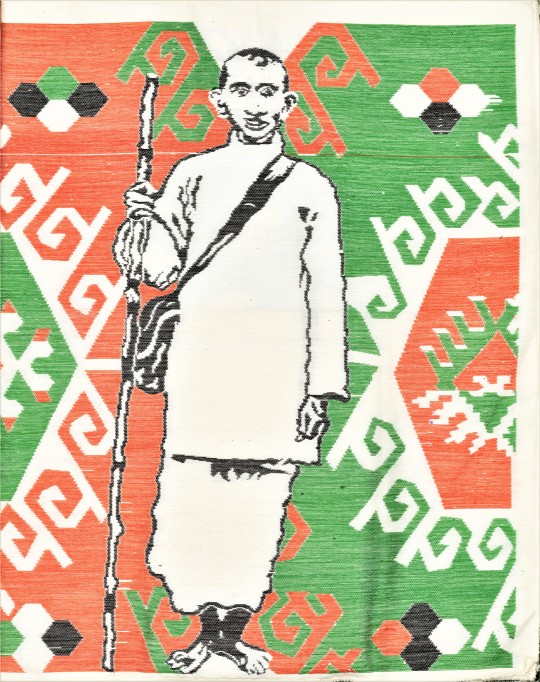
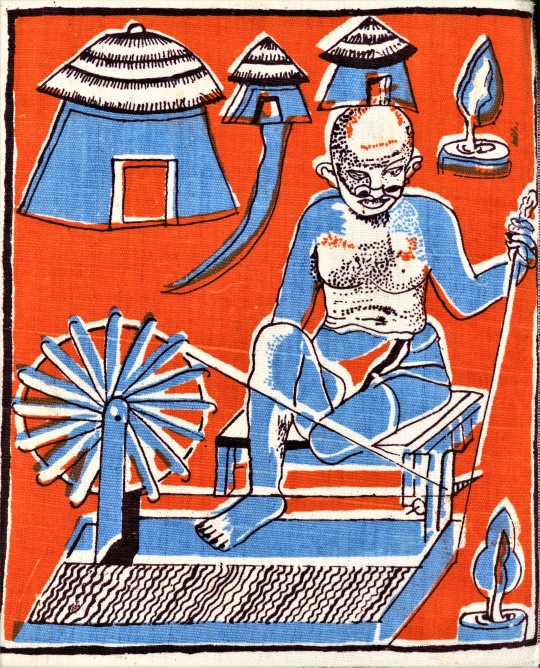





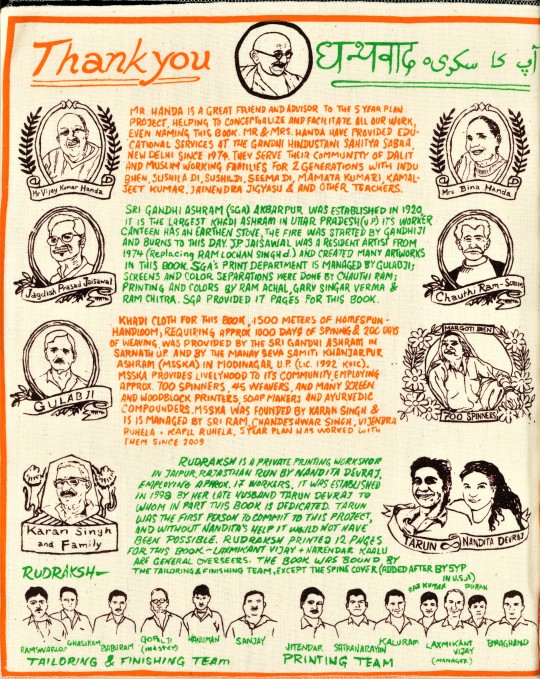
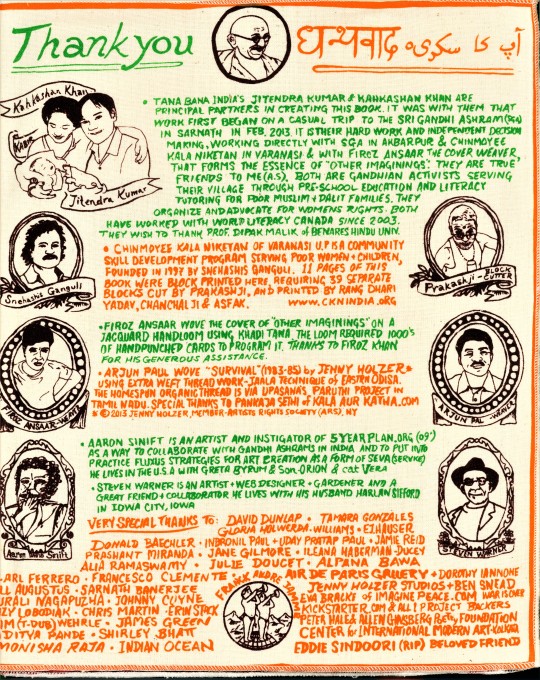
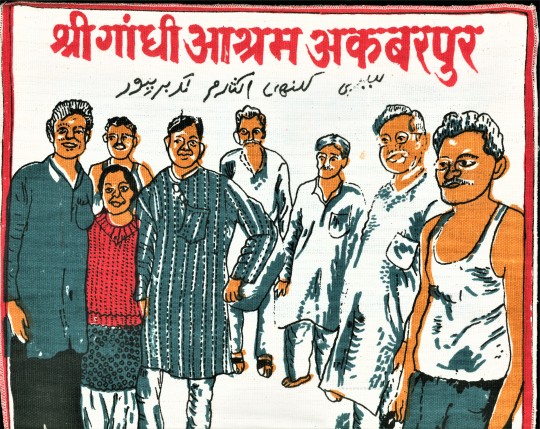
Asian American and Pacific Islander Heritage Month
During this AAPI Heritage Month we present Other Imaginings, an artists book made of hand-spun and woven Khadi cloth, with images woven, silkscreened, and relief printed by Indian artisans at Sri Gandhi Ashram in Akbarpur, the Chinmoyee Kala Niketan in Varanasi and Rudraksh in Jaipur. The images were curated and the project coordinated by American visual artist Aaron Sinift in collaboration with his Indian colleagues Kahkashan Khan and Jitendra Kumar. The book was produced in the state of Uttar Pradesh by 5YearPlan.org in 2016 in a limited edition of 100 copies.
The project explores universal aspects of Gandhian visual culture in discourse with contemporary international artists and new ashram artist commissions. Sinift writes:
This book is a seva (service) in honor of Mohandas Gandhi (1892-1948) and inspired by the khadi cloth he wore and propagated throughout India. Gandhij sae khadi as a swadeshi (locally produced & used)fabric to clothe a free and independent India. . . . OTHER IMAGININGS is an attempt to introduce Gandhiji’s counter-industrial vision of village self-sufficiency. . . . This book in an artifact (art & fact) of a living tradition of service that continues into the present day, and is curated as a mix of deshi & videshi (local + foreign), Gandhi ashram & contemporary art. We hope you will take the time to consider the qualities of this home-spun khadi . . . and linger on its fragrance and tactile qualities as evidence of the hundreds of hands contributing to its creation. . . .
The book includes images designed by several non-Indian artists, such as Judith Linhares, Dorothy Iannone, Jenny Holzer, Philip Taaffe, Duncan Tonatiuh Smith, and Yoko Ono. Except for the cover, we are only showing the pages designed by Indian artists here. Click on the images for attributions.

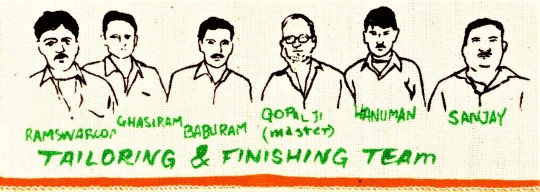
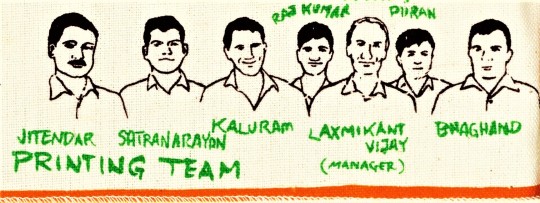
#Asian American and Pacific Islander Heritage Month#AAPI Heritage Month#holidays#India#Indian art#khadi#Other Imaginings#Aaron Sinift#Kahkashan Khan#Jitendra Kumar#5YearPlan.org#Sri Gandhi Ashram Akbarpur#Chinmoyee Kala Niketan#Rudraksh#J. P. Jaisawal#silkscreen printing#woodblock prints#hand-woven fabric
31 notes
·
View notes
Text



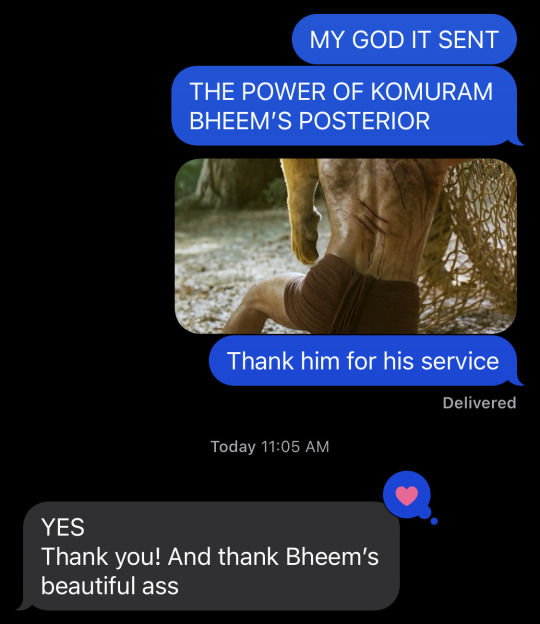
Been trying to send 40GB of photos to my brother for like an entire week and it only worked when I promised on Bheem’s ass. NOT A COINCIDENCE!!!!
#insane that Komoram Bheem was a real human being who worked tirelessly to liberate Telangana from the British imperial police state#like he actually made genuinely heroic contributions to the fabric of history#and I’m invoking his name because a nepo baby actor has a nice butt lmfao#what is wrong with me#….#Indian cinema fanboy things
8 notes
·
View notes
Text
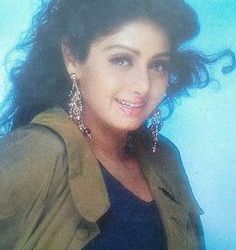

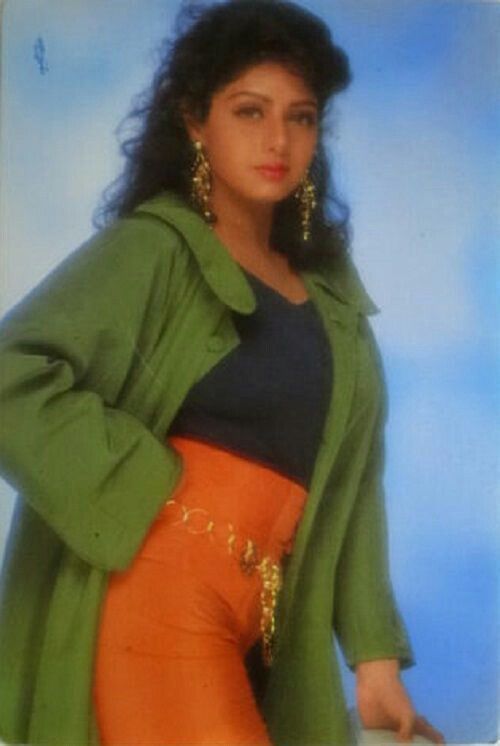


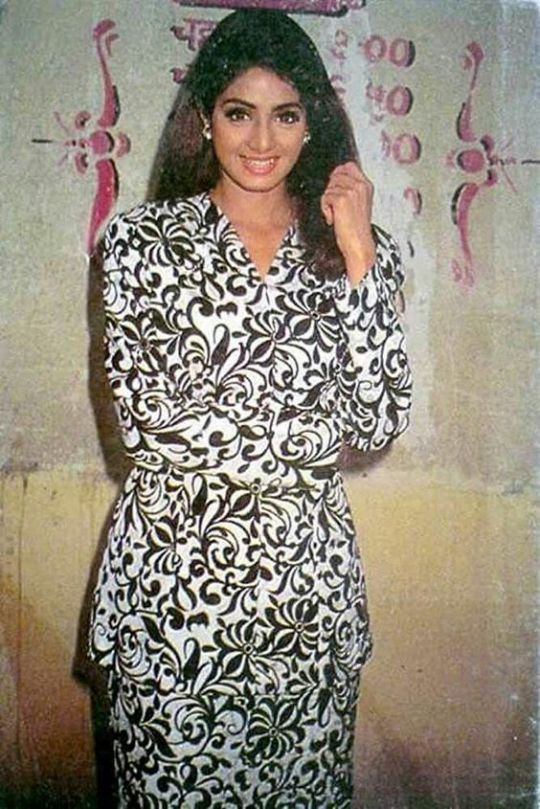



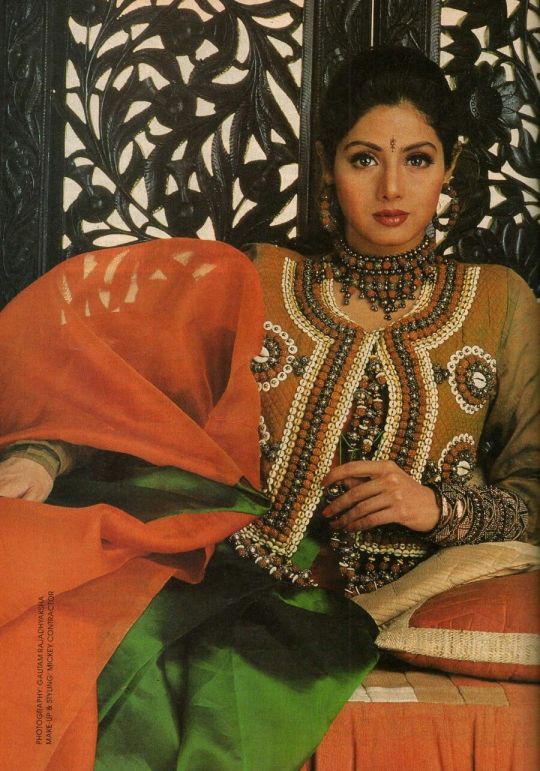
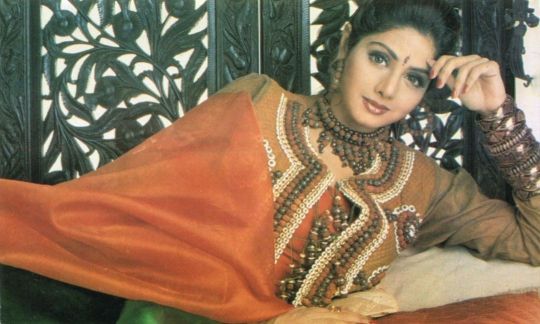
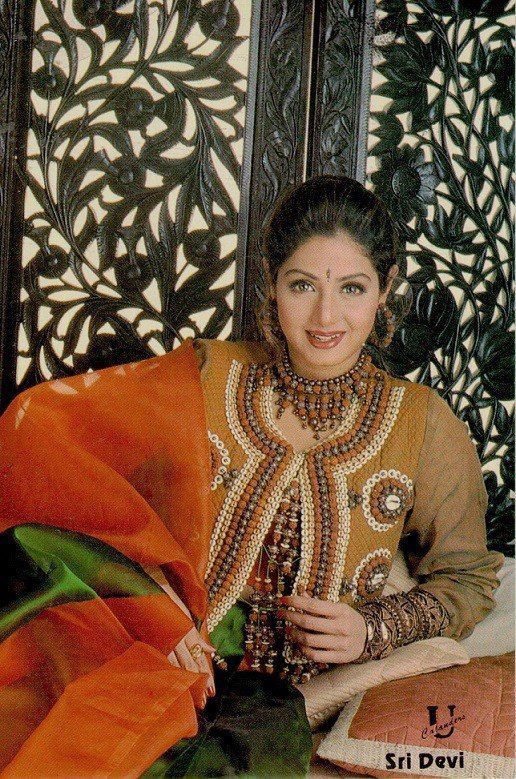
Sridevi's style evolution...
9 notes
·
View notes
Text
Marjory C. Woodbury, Indian Head Fabric, 1918
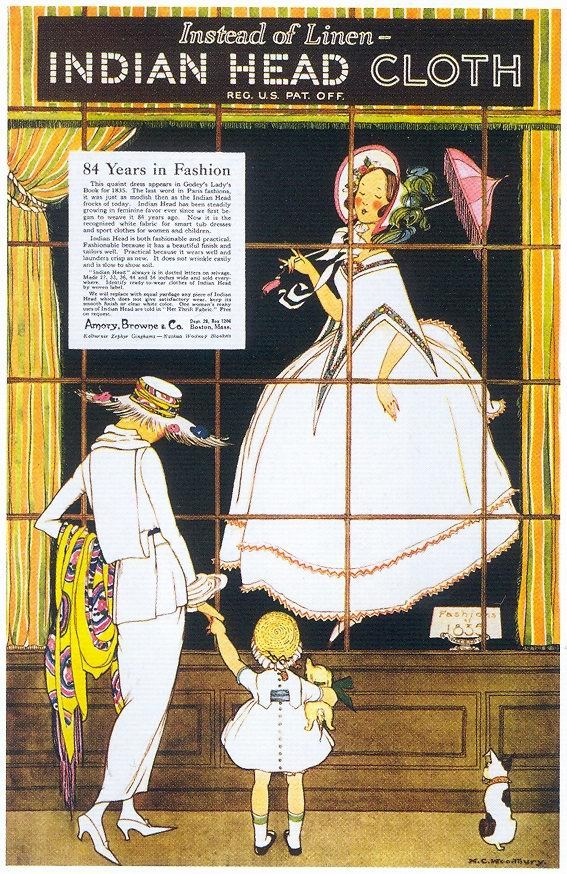
From Taschen's "All-American Ads 1900-1919".
5 notes
·
View notes
Text
Understanding the Indian Lehenga Look
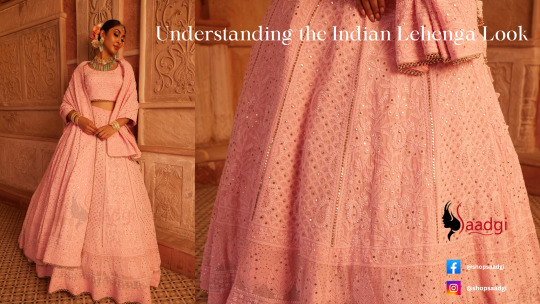
What is a Lehenga?
An Indian lehenga is a traditional attire that originated in the Indian subcontinent. It is a long, flowing skirt that is usually paired with a blouse and a dupatta. Lehengas are typically worn for occasions such as weddings, festivals, and cultural events.
The beauty of Lehenga
The history of the lehenga dates back centuries, and it has evolved over time. Initially, lehengas were simple and modest, reflecting the cultural values of the time. They were adorned with intricate embroidery, mirror work, and other traditional embellishments.
A Glimpse into the History of Lehenga
The lehenga has a rich history that can be traced back to the Mughal era. During this period, lehengas were worn by royals and were considered a symbol of status and wealth. They were often made with luxurious fabrics like silk and velvet and were embellished with precious stones and intricate embroidery.
Trends in Lehenga
In recent years, lehengas have undergone a transformation to suit the modern tastes and preferences of individuals. Contemporary lehengas come in a wide range of styles, colors, and designs. Designers experiment with different fabrics, cuts, and embellishments to create fashionable and unique lehengas.
Modern Twists with Lehenga
Modern twists in lehengas include incorporation of Western elements, such as fusion contemporary prints. Designers also experiment with unconventional colors and blouse designs to add a touch of modernity to the traditional attire. Additionally, lehengas are now being paired with crop tops, jackets, and even shirts to create a fusion look.
Overall, the lehenga has evolved from a simple and traditional attire to a fashion statement that combines tradition with modernity. Whether you prefer the classic elegance of a saadgi lehenga or the contemporary flair of a modern twist, the lehenga continues to be a beloved and versatile outfit for special occasions.
#chikankari#embroidery#handcrafted#fabric#hand work#fashion#crafts#outfit#stitch#lehenga#indian lehenga
8 notes
·
View notes
Text
the desi diaspora clothing industry has gotten too crazy im happy most of them are sourcing sustainably but im sorry if you sell a sari you need to at least include a blouse piece. why are you selling a separate blouse for 80 dollars. don't stitch it that's fine just sell the PIECE
#tbh i do think a stitched blouse should be included for the prices these go for but bot even the blouse piece????#would it kill these brands to include an extra yard of fabric??#im lucky though i have multiple indian tailors within an hour of me so i can use the piece
2 notes
·
View notes
Text
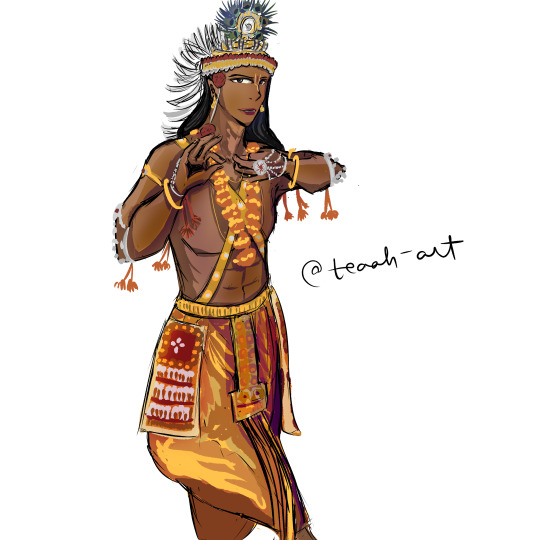
Character of the Day - Krishna
I'm gonna draw one mahabharat character everyday till I give up
All Mahabharat Character of the Day Sketches
P.S. : Krishna here is wearing what traditional Manipuri dancers wear when they portray Krishna. You are free to interpret this as art of Krishna himself or of a Manipuri dancer - as you see fit!
Why the sudden change in clothing style you ask? Well, right before I drew this, I came across a post where another Hindu mythology focused blog was being 'called out' for involving 'gods in their fantasy'. I drew this in a rage and planned to include a long rant with it. Something something all of Indian classical and nearly all South Asian folk traditions draw inspiration from religious stories and are by extension 'gods in fantasy' but drawing the details on this calmed me down so no rant for today. Anyway, this blog is a safe space for all Hindu gods in fantasy supporters, even more so if you are Asian or of Asian heritage and I'm always here and on my main (@cyndaquillt) to chat about AUs, fanfics, fanart, and more.
For folks who don't support Hindu gods in fantasy, abe aa tu askbox pe mil (no I will not translate)
#mahabharat cotd#mahabharat character of the day#mahabharat#mahabharata#krishna#manipuri#indian classical dances#fanart#original art#my art#anyway silk is a great fabric if you want to practice lighting on shiny cloth
36 notes
·
View notes
Text
Cotton Mul-Mul Sarees: Timeless Elegance and Comfort
Cotton mul mul saree, also known as muslin sarees, epitomize the perfect blend of tradition, comfort, and grace. Originating from the Indian subcontinent, these sarees have stood the test of time and continue to be a favorite among women for their sheer beauty and versatility.

The Fabric of Dreams:
Cotton mul mul saree fabric is characterized by its lightweight and breathable nature. The fine, airy texture of the fabric makes it an ideal choice for various climates, especially during the scorching summer months. The sarees crafted from Mul-Mul cotton are not only comfortable but also exude an ethereal charm.
A Palette of Colors:
One of the striking features of Cotton Mul-Mul sarees is the wide array of colors they come in. From vibrant hues to subtle pastels, these sarees cater to every taste and occasion. The simplicity of the fabric allows for easy dyeing, resulting in an exquisite spectrum of shades.
Timeless Elegance:
Cotton mul mul saree are a symbol of timeless elegance. The simplicity of the fabric is often complemented by delicate zari work, intricate embroidery, or artistic prints. These embellishments add a touch of sophistication to the saree, making it suitable for both casual and formal settings.
Versatility Redefined:
One of the unique aspects of Mul-Mul sarees is their versatility. They can be draped effortlessly for a casual day out or styled with rich accessories for a formal event. The adaptability of these sarees makes them a wardrobe staple for women who appreciate both comfort and style.
Draping the Mul-Mul Magic:
Draping a Cotton Mul-Mul saree is a delightful experience. The fabric effortlessly molds to the body, ensuring ease of movement. The soft folds and pleats enhance the overall grace, creating a silhouette that is both flattering and comfortable.
Caring for Mul-Mul:
Cotton Mul-Mul sarees are relatively low-maintenance. They can be hand-washed with mild detergent and dried in the shade. Avoiding direct sunlight during drying helps preserve the vibrancy of the colors. Additionally, HasthChhap storing Mul-Mul sarees in a cool, dry place ensures their longevity.
Embracing Tradition with Mul-Mul:
In a world that is constantly evolving,Cotton mul mul saree stands as a testament to the enduring charm of traditional fabrics. These sarees connect modern women with age-old weaving techniques and craftsmanship, fostering a sense of cultural continuity.
Where to Find Cotton Mul-Mul Sarees:
The market for Cotton Mul-Mul sarees has expanded with the rise of online shopping. Numerous platforms offer a diverse collection of these sarees, allowing customers to explore various designs, colors, and price ranges from the comfort of their homes.
Conclusion:
Cotton mul mul saree are not merely garments; they are an embodiment of cultural richness and comfort. Whether donned casually or worn during special occasions, these sarees carry a timeless allure that transcends fashion trends. Embrace the elegance, celebrate tradition, and experience unparalleled comfort with the graceful drape of a Cotton Mul-Mul saree.
#cotton saree#cotton kurtis online in india#cotton fabric online india#sareecollection#sareeindia#sareelove#sareefashion#indian fashion#women clothing#sareestyle#saree#mulmul saree#bagru print suits online
3 notes
·
View notes
Text

22 notes
·
View notes
Text

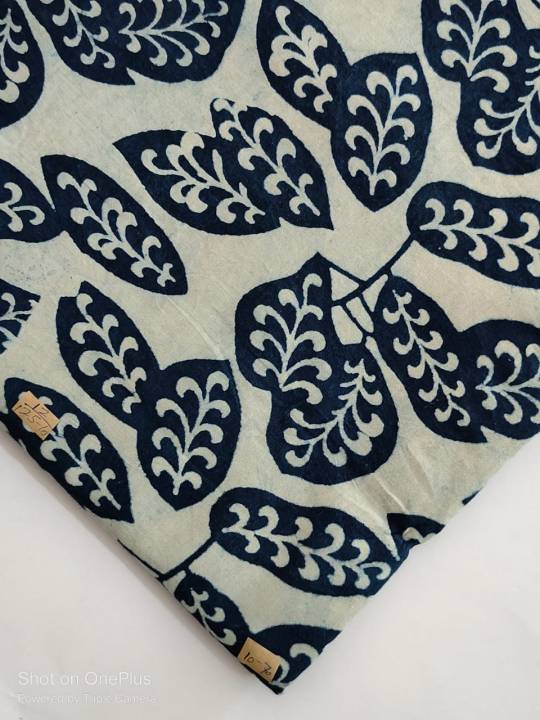

https://thecozycreationsart.etsy.com/listing/1538623147


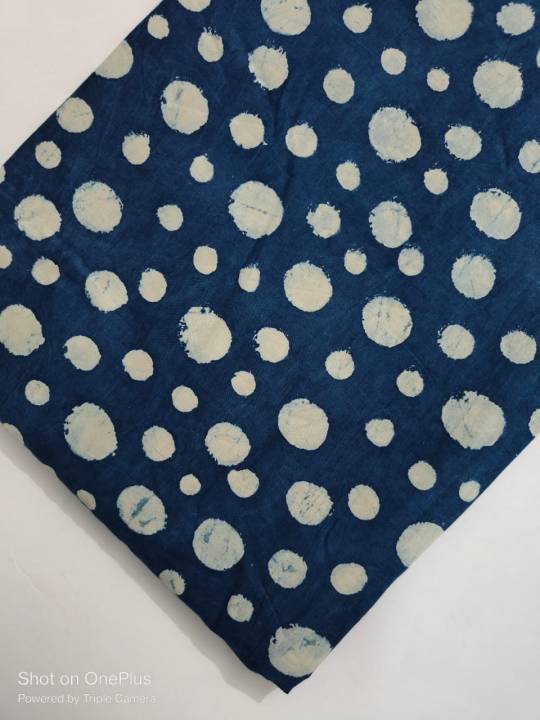
#block print cotton fabric#hand block print cotton fabric#sewing fabric#handmadefabric#cotton fabric#block print#quilting#amigurumi#applique#cross stitch#womenswear#menswear#indian hand block print cotton fabric natural vegetation colours soft light weight dress fabric#dressmaterial#Spotify
2 notes
·
View notes
Text


I hc bingtown fashion as super South Asian inspired, so here are just a couple sketches playing around with that idea
#i feel like with a lot of indian fashion the cuts are so simple you really get a chance to see the fabric and embroidery shine#which totally suits bingtown seeing as its such a trade hub + wealth is everything there#so it makes sense that fashion would be an immediately obvious marker of social stratification#but also just#brown clothes good#realm of the elderlings#rote#rote fanart#art#robin hobb fan art#bingtown#liveship traders#sketch#fashion#sorry this is like horribly messy but you get the idea
8 notes
·
View notes